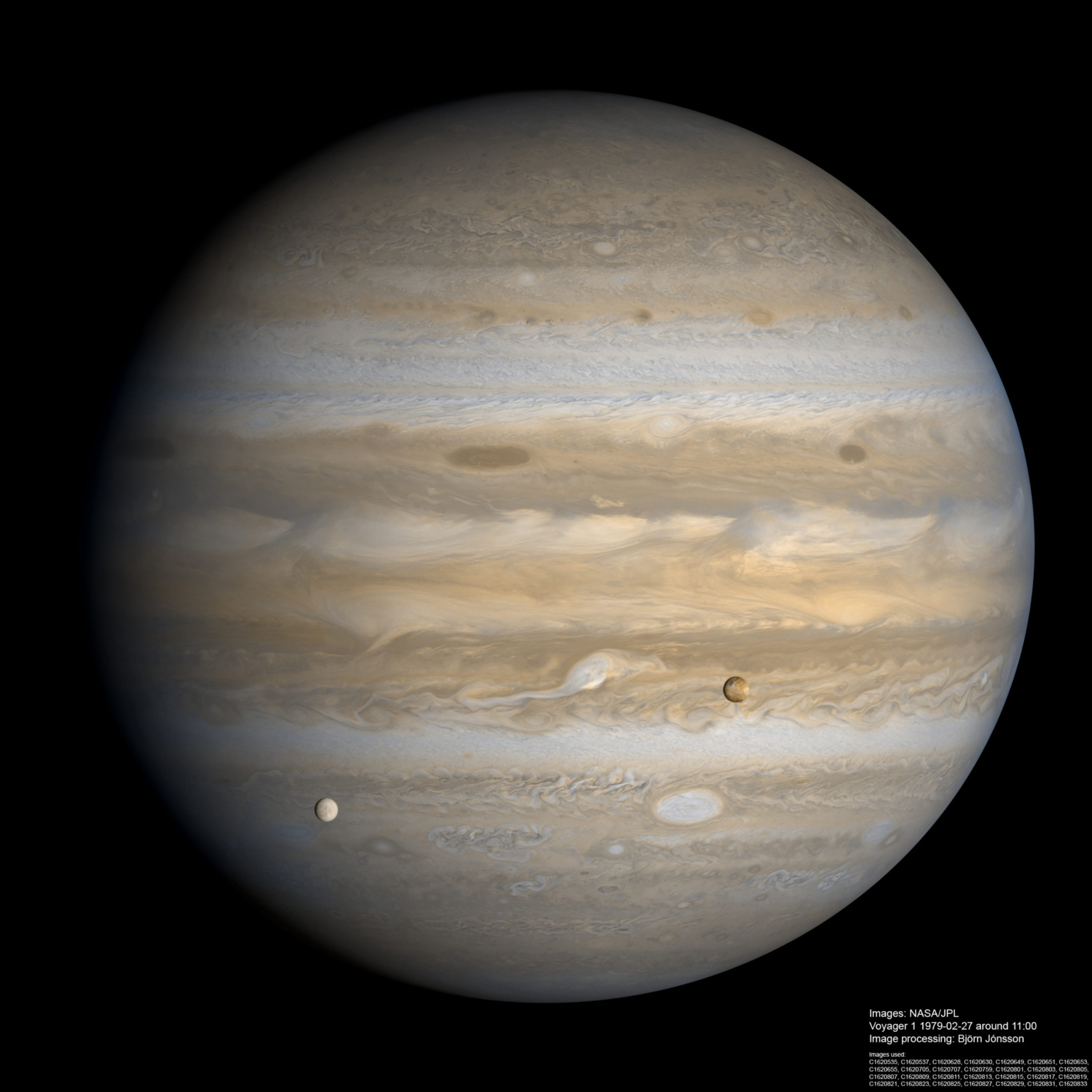Björn Jónsson • Jan 22, 2013
Voyager 1 revisited: Io and Europa transiting Jupiter
What is the highest resolution global Jupiter mosaic that includes a satellite transit that can be assembled from Voyager images? Satellite transits are especially beautiful when the resolution is high enough for some details to be visible on the satellites so I decided to check this.
And I was remarkably lucky. It turns out that just a few hours before Voyager 1 ceased its 3x3 global imaging sequence and switched to targeted observations, it imaged a double transit involving Io and Europa. Here is a global mosaic of this event. It shows Io and Europa silhouetted against Jupiter's vast disc:

A significant amount of details is visible on the satellites. Icy Europa looks very bright compared to Jupiter, mainly because it's silhouetted against a region not far from Jupiter's terminator. Some familiar features are visible on Io.
The images were obtained from a range of 7.3 million kilometers on February 27, 1979. This is slightly closer than in an earlier mosaic I posted that includes the Great Red Spot, which makes this the highest resolution global Voyager mosaic of Jupiter that I know of (there is a Cassini mosaic where the resolution is slightly higher though). Voyager 1 was imaging Jupiter through orange and violet filters so I had to make synthetic green and do some color processing to get something resembling an RGB image. I used 14 orange/violet image pairs (28 images). Overall the color and contrast should be fairly accurate.
The processing is similar to the processing of the earlier big mosaic. The main exception is that I had to fill a very small gap near the north pole by 'cloning' adjacent areas. Since the satellites moved relative to Jupiter between the orange and violet images the satellite images had to be processed separately from Jupiter and then 'merged' into the 'background' (Jupiter). The result in effect shows the position of the satellites and the appearance of the Jovian clouds near the satellites in the violet images.
Processing Voyager mosaics requires reprojection of images to a simple cylindrical projection and then rendering everything using the same viewing geometry. Because I didn't have any information on the camera pointing I had to 'reverse engineer' all of that information. The presence of two satellites made it easier to determine the camera pointing than when no satellites are visible. In particular, the image orientation (north direction) is easy to determine when two satellites are visible.
Support our core enterprises
Your support powers our mission to explore worlds, find life, and defend Earth. You make all the difference when you make a gift. Give today!
Donate

 Explore Worlds
Explore Worlds Find Life
Find Life Defend Earth
Defend Earth

